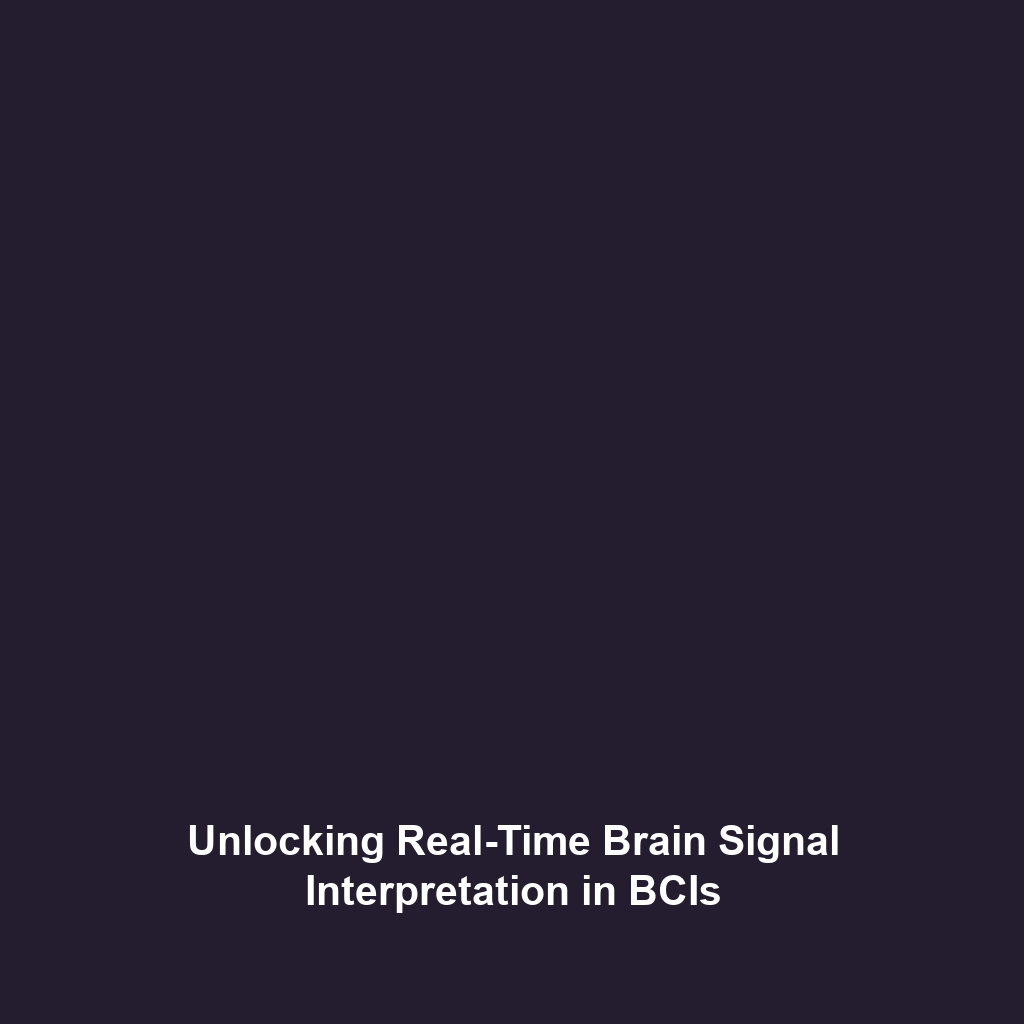Real-Time Performance in Brain-Computer Interfaces
Real-time performance is a pivotal aspect of Brain-Computer Interfaces (BCIs), as it involves the instantaneous interpretation of brain signals. This capability is essential for applications such as controlling prosthetic devices and enhancing interactions within virtual environments. Understanding how these systems operate in real-time not only sheds light on the technological advancements in neuroscience but also signifies the potential for rehabilitation and augmentation in various fields. In this article, we will delve into the core principles, applications, challenges, and future innovations surrounding real-time performance in BCIs.
Key Concepts of Real-Time Performance
At the heart of real-time performance in BCIs lies a series of critical concepts:
- Signal Acquisition: The process of capturing brain signals using electrodes, often through techniques like EEG or ECoG.
- Signal Processing: Techniques employed to filter, amplify, and interpret the captured signals to discern meaningful data.
- Machine Learning: Algorithms that analyze brain data patterns to facilitate predictions and control actions based on the user’s intent.
- Feedback Mechanisms: Systems that provide real-time feedback to users, allowing for adjustments and learning during interactions.
Understanding these concepts is crucial for advancing the efficiency and effectiveness of Brain-Computer Interfaces.
Applications and Real-World Uses
Real-time performance is integral to various applications within BCIs, particularly in improving the quality of life for individuals with disabilities. Key examples include:
- Prosthetic Control: Users can control prosthetic limbs through thought alone, providing a more natural and intuitive experience.
- Virtual Reality Interaction: BCIs enable users to engage with virtual environments directly through brain signals, enhancing gaming and simulation experiences.
- Neurofeedback Therapy: Real-time monitoring of brain activity is used in therapeutic settings to help individuals regulate their mental states.
These applications showcase how real-time performance is essential in revolutionizing assistive technologies and expanding the possibilities for human-computer interaction.
Current Challenges
Despite the advancements, several challenges persist in interpreting brain signals in real-time within BCIs:
- Signal Noise: External noise and physiological artifacts can disrupt the accuracy of brain signal interpretation.
- Latency Issues: Delays in processing brain signals can hinder the immediacy necessary for effective control of devices.
- Individual Variability: Differences in brain anatomy and signal patterns among users complicate the development of universal solutions.
- Ethical Concerns: Issues related to privacy and consent around brain signal data remain a significant concern.
Future Research and Innovations
Future research in real-time performance for BCIs aims to address the existing challenges while exploring novel approaches:
- Advanced Signal Processing: Developing more sophisticated algorithms to effectively filter out noise and enhance signal clarity.
- Portable and Non-Invasive Devices: Innovations focused on creating user-friendly devices that do not require invasive procedures.
- Integration with AI: Leveraging artificial intelligence to improve prediction accuracy and adaptability of BCI systems.
- Expanded Applications: Exploring the potential for BCIs in cognitive enhancement and mental health treatments.
Conclusion
Real-time performance is a cornerstone of Brain-Computer Interfaces, impacting various fields from medicine to entertainment. As research progresses and technologies evolve, the ability to interpret brain signals in real-time will only enhance the applications of BCIs, offering greater independence and capabilities for users. Continued exploration in this field promises to unlock new opportunities and innovations. To learn more about related technologies or applications, visit our articles on neurorehabilitation and virtual environments.

